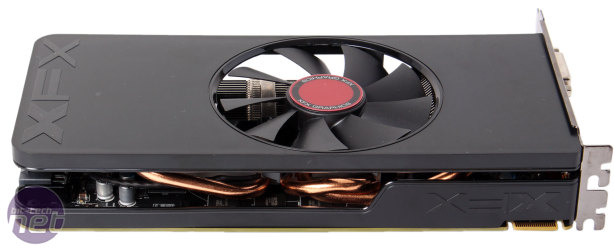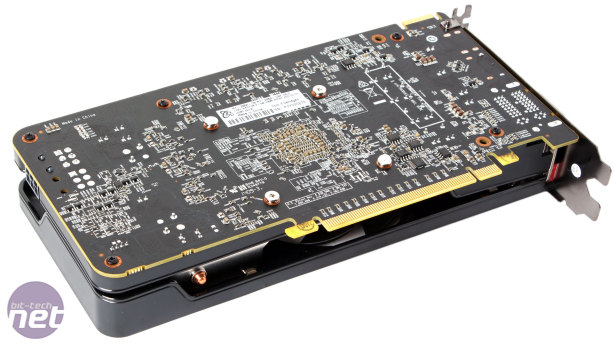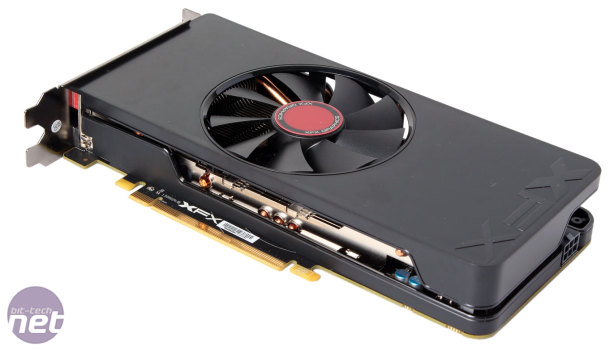
Performance Analysis
The R7 265 gets off to a cracking start in Battlefield 4, though this has always been a game that favours AMD cards. It's a whole 6fps quicker than the GTX 750 Ti on the minimum frame rate at 1080p, and it's able to keep things playable (albeit just) at this resolution on the 'Ultra' settings whereas the GTX 750 Ti simply cannot. Switching to 'High', which crucially drops MSAA for 4x to 0x, reveals the gap between the two even more – the GTX 750 Ti manages a minimum of 35fps, but the R7 265 leaps ahead to 48fps, with an average close to 60fps.Nvidia gains some ground back in BioShock Infinite, where the cheaper GTX 750 Ti is actually a few fps ahead of the R7 265 at 1080p. Neither card is able to sustain playable frame rates at 2,560 x 1,440, but the R7 265 does come out on top here, though only by 1fps on its minimum frame rate, and Nvidia's card has a slightly higher average frame rate too.
Crysis 3 doesn't seem to have a particular preference for AMD or Nvidia hardware, and as such the R7 265 slots in right where you'd expect it to given the £10 more you'll pay for it over the GTX 750 Ti. At 1080p with the 'Very High' preset, it's minimum and average frame rates of 25fps/31fps leave it feeling a little smoother than the 23fps/27fps of the GTX 750 Ti. Dropping down to the 'High' setting means both cards are considerably smoother, as they can sustain frame rates over 30fps, but the R7 265 maintains its small advantage. It's also faster at 2,560 x 1,440, though this is meaningless since both cards stutter more than a Penguin advert.
In Skyrim, the R7 265 has a considerable advantage over competing Nvidia hardware. At 1080p, it's even able to surpass the more expensive GTX 660 with an excellent minimum frame rate of 63fps, whereas the GTX 750 Ti only manages 46fps. The R7 265 even copes at 2,560 x 1,440 here, hitting a 46fps minimum while its closest Nvidia rival only just gets over 30fps.
The R7 265 is inseparable from the GTX 750 Ti in Unigine Valley – they attain the exact same score at 1080p and there's only a 13 point difference at 1440p. You'd hope that the R7 265 would be the better card here given its price, but it's not a bad result as Nvidia hardware typically does better here.
Power consumption and efficiency is one field in which Nvidia has AMD undeniably beaten. The R7 265 takes our system power consumption to 242W under load, while the faster GTX 660 only pulls 227W. Meanwhile, the GTX 750 Ti, which isn't that far behind in terms of power, pulls only 174W – it doesn't even need a surplus PCIe power connection. The AMD card also draws a little more power when idle.
Since we don't have a reference R7 265 card to compared the XFX model to, it's hard to determine how effective the XFX cooler is. However, we can safely say that the delta T of 43°C under load is nothing to be worried about, and the card was barely audible when maintaining this temperature.
The excellent overclocking results for the R7 265 allow it to pull further away from the GTX 750 Ti, and while the GTX 750 Ti itself manages some solid overclocked results, they're not enough to catch the R7 265. In Battlefield 4, the R7 265 improves by 17 percent, and in Crysis 3 it does so by a whole 20 percent. The overclock also allows it to sustain at least 30fps in these two highly demanding games, which is no small feat, and also to surpass both the GTX 660 and R9 270, at least at stock speeds. In Unigine Valley, the R7 265 and GTX 750 Ti have almost identical scores at default settings, and this allows us to see the extra potency of the AMD card's overclock, as it increases its score by a full 24 percent, whereas Nvidia's does so by only 13 percent. That said, the R7 265 drew an extra 30W from the wall when overclocked, whereas the difference is closer to 3W when it comes to the GTX 750 Ti.
Conclusion
Competition is fierce in the £100-£150 GPU market, and rightly so, as small price differences here can lead to relatively large leaps in performance. As we mentioned, the R7 265 with its £115 price tag slots into the market between the GTX 750 Ti and the GTX 660/R9 270. Its performance isn't in this same position every single time (e.g. BioShock Infinite), but on the whole the R7 265 puts in a very convincing performance, especially when you take into consideration its excellent overclocking potential – it certainly does enough to justify the extra £10 or so that it costs over a GTX 750 Ti. However, if efficiency or low power are your priorities, it's the Maxwell GPU that should be your port of call.If your budget can stretch to it, both the GTX 660 or the R9 270 would be offer a little more future-proofing for 1080p gaming, but if not the R7 265 is still a very good value card that will handle most games smoothly at 1080p using either high or ultra settings. The XFX Core Edition is one of the cheapest R7 265 cards we've seen, and given that its cooler remains quiet even under prolonged load, we have no qualms recommending it.

-
Performance29 / 40
-
Features26 / 30
-
Value26 / 30


MSI MPG Velox 100R Chassis Review
October 14 2021 | 15:04












Want to comment? Please log in.